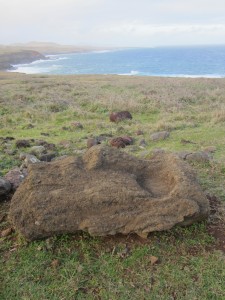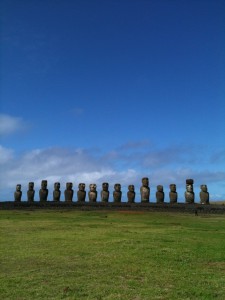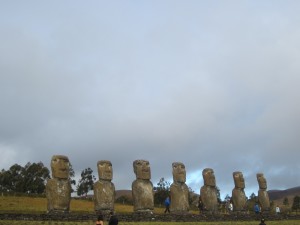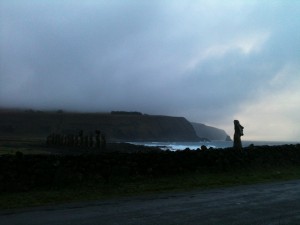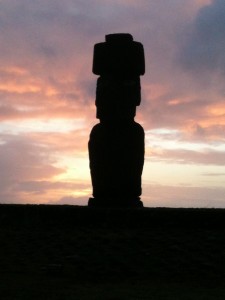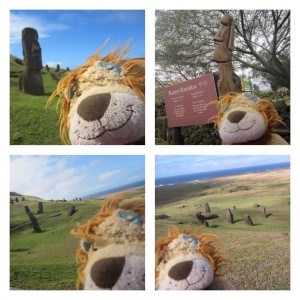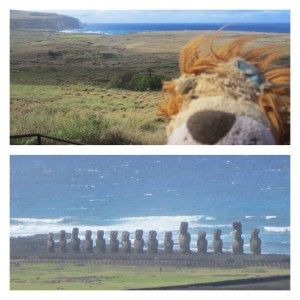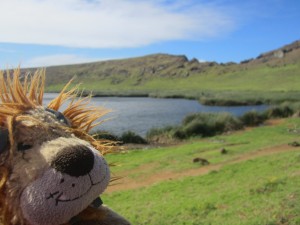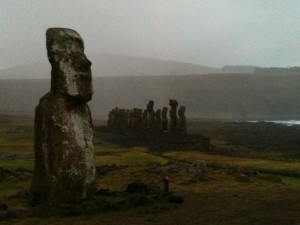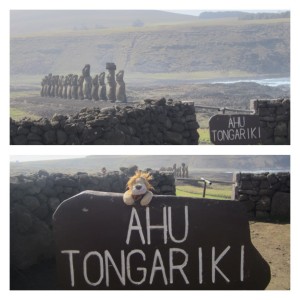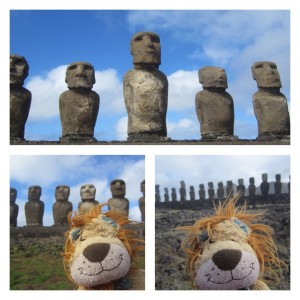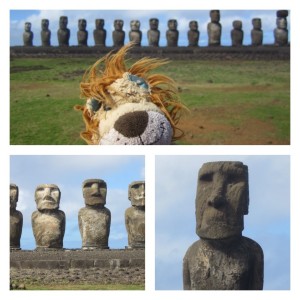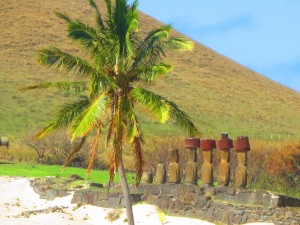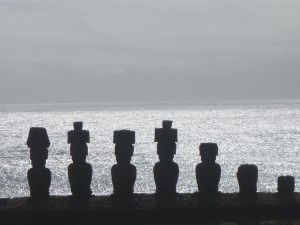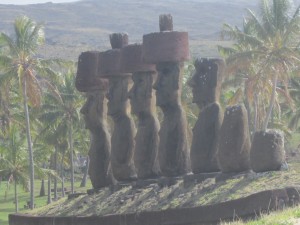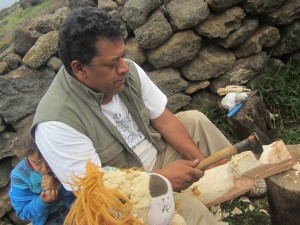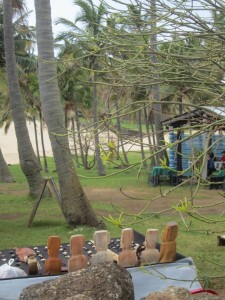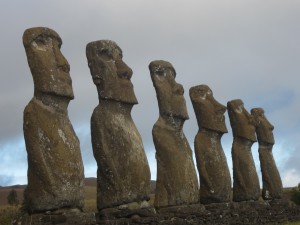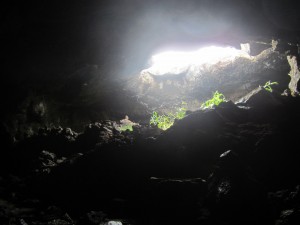What intrigued Lewis the Lion more than anything was the notion that Easter Island had a lost culture. That is to say that no-one really knows for sure what happened to their civilisation as it had almost disappeared completely by the time Europeans landed there in 1722. By the time James Cook landed there in 1774, all that remained were its monuments: huge monolith statues lying in pieces with all but a few islanders. Lewis the Lion wanted to know why these enormous statues were there? But would he find out?
Originally, this island was called ‘Te Pito O Te Henua’ which meant the “navel of the world’ but the Europeans renamed it as Easter Island because that was the day that the Dutch admiral, Jacob Roggeveen landed there.
Lewis the Lion discovered that between the years 800 and 1600 this Polynesian island grew to have an estimated population of 20,000. During this time, the moai were built and placed on ceremonial platforms all over the island. (Today there are 887 statues on the island).
However, the subsequent years saw the demise of the culture. Being an island, many of the natural resources had been depleted and deforestation had taken place. An island in crisis, warring tribes formed and started to wipe each other out! Lewis the Lion discovered that during this time, a strange cult of the Birdman developed. (He will tell you about that in one of his next blogs).
The population was further reduced due to disease and slavery and as the Rapa Nui people mainly had an oral tradition of passing on their history, when they died, the knowledge of their people died with them. That is why there is so much mystery and intrigue today.
That means that historians and anthropologists alike are left guessing at what the purpose of those huge monoliths might have been? However, they agree that they were probably toppled over during the island’s civil war. Lewis the Lion thought that they must have represented important people or leaders in the society but who knows if he’s right or not?!
As Lewis the Lion travelled across the island, he discovered that most of the moai which had been placed upright had been done so with collaboration of external funding from abroad. They were buried deep into the ground to save them from toppling over: Lewis the Lion was happy to learn that they were securely fixed in the ground, that’s for sure! The average one is 13 feet tall (3.96 metres) but the tallest one is a staggering 71.93 feet (21.92 metres)!
Here are some of the moai that he saw at various spots around the island:
*Tahai and Hangal Kio ‘e
Closest to where Lewis the Lion was staying in the main town of Hanga Roa, some of these moai stood on the cliff tops.
Lewis was particularly impressed when he saw the dark, granite stone of the moai contrast with the reds and orange hues of sunset as he looked out to sea.
*Rano Raraku
Here the moai were scattered all over the landscape
but from here you had fabulous views of the Tongariki moai on the coast.
There was also a dormant volcano where the crater had been flooded with water so it looked like a lake.
*Tongariki
He tried to see the sunrise over these impressive moai that stand on the coastline but they were shrouded in cloud and rain! “Never mind,” Lewis thought to himself, “I think they look even more atmospheric and eerie like this anyway!”
Luckily for Lewis the Lion though, he had already visited these incredible monoliths the previous day when the weather was a bit sunnier.
These were perhaps his favourite statues on the whole island as he could really see the different personalities of the people they were representing.
Some were tall, some were short. Some even had pot-bellies. He thought one even looked like his dad when he was in a grumpy mood!
He also took a short video whilst stood behind the platform (Ahu), looking out to sea. Click here to see it.
*Anakena
Lewis the Lion just loved these moai at Anakena as they stood right on the beach but first you had to pass through a stretch of palm trees.
Lewis thought that this was stuff of desert island dreams! From a distance, looking out to sea, they almost looked like chess pieces.
Lewis also wondered why some of them had something on their heads? Was it a crown? Was it a hat? A local woman told him that it was in fact a top-knot, where the hair is pulled back and tied up on top of your head.
Beside this site were cafes selling barbecued food
and there was a wood-carver, carving wooden statues of the moai. Lewis though that he was incredibly skilled as although he seemed to hack the wood with the axe, remarkably the planks of wood took shape and were transformed into moai like statues!
*Ahu Akivi
These moai were positioned in the countryside in the internal part of the island.
Right beside them were some fabulous caves where Lewis the Lion did a little bit of exploring. Even though we know that Lewis is a brave little lion, this time he didn’t dare go too far down them without a torch to guide him and especially when he couldn’t see the puddles of water beneath his paws!
Having seen the pictures of the Moai on Easter Island, what do you think they represent and why do you think they have come to be there? Lewis the Lion wonders if you could write a story to explain what might have happened?
If you would like to learn some more about the Moai statues on Easter Island, go to this link.

